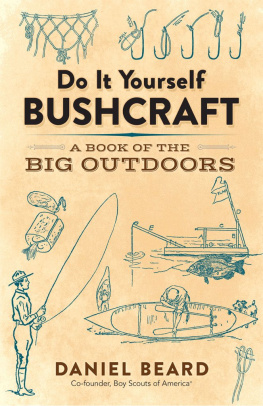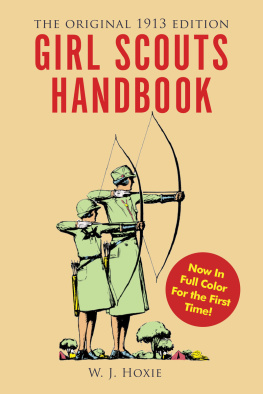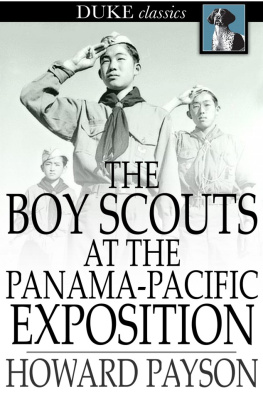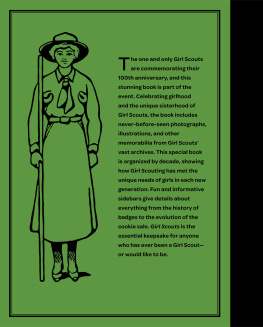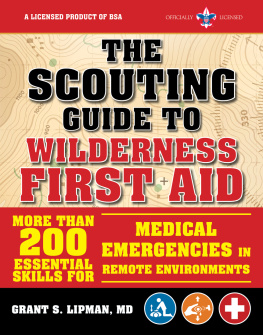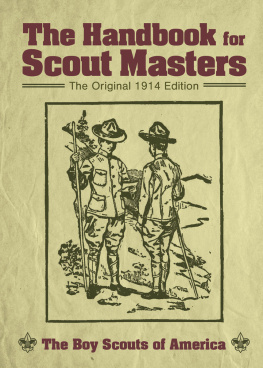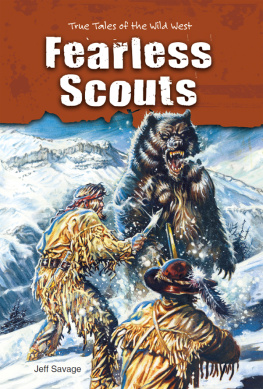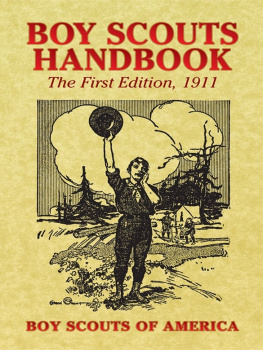A SCOUT'S BOOK OF SIGNS, SIGNALS AND SYMBOLS

THE PICTURE ROCK BY THE TRAIL
THESE SYMBOLS SIGNIFY:
Easy two miles to good camp, plenty of food and good water, horses, boats, and a jolly time

Bibliographical Note
This Dover edition, first published in 2018, is an unabridged republication of the work originally published by J. B. Lippincott Company, Philadelphia, in 1918, under the title The American Boys' Book of Signs, Signals and Symbols.
International Standard Book Number
ISBN-13: 978-0-486-82086-6
ISBN-10: 0-486-82086-6
Manufactured in the United States by LSC Communications
82086601 2018
www.doverpublications.com
PREFACE
FOR years the writer has been working on these ideographs, picturegraphs, tramps,' yeggmen's, scouts,' trappers,' gypsies' and Indian signs, symbols and signals, not with the object of writing a cumbersome, more or less accurate, dictionary, but for the purpose of selecting such systems of signs as may be of use to the boys in their games in the open. Especially are these cryptograms, hieroglyphics, cabalistic figures and emblems useful to our youthful army of Boy Scouts and it is for them particularly that this book was written, although now that war is declared it is hoped that some hints herein may be of service to the fighting men of our country.
The desire to be of help to our great nation in everything he does for boys prompted the author to rewrite and enlarge this whole book after it was in the hands of the publishers. This made it necessary to postpone its publication for a year. Weather signs and animal signs have been added because of the demand for them from the boys themselves.
DANIEL CARTER BEARD
FLUSHING, L. I.
MAY 1, 1918
CONTENTS
| . |
| . |
| . |
| . |
| . |
| . |
| . |
| . |
| . |
| . |
| . |
| . |
| . |
| . |
| . |
| . |
| . |
| . |
| . |
| . |
| . |
| . |
| . |
| . |
| . |
| . |
| . |
| . |
| . |
| . |
SIGNS, SIGNALS AND SYMBOLS
INTRODUCTION
THE Goddess of Liberty is a sign or symbol representing no real person or god, but she does represent the idea of human freedom. Columbia in a like manner represents America as Britannia does Great Britain. The Bear is the totem, or sign, of Russia, the Bald-headed Eagle the totem of United States.
AMERICAN GUMPTION
It takes gumption to really understand these things, and the American boy is supposed to possess a large amount of this article in his make-up; in fact, this is supposed to be also true of the American man. Gumption is a good old-fashioned word which implies a multitude of virtues. Brother Jonathan himself typifies gumption, that is, he stands for and is the sign of gumption. But how many of my readers know who is Brother Jonathan?
Brother Jonathan has been neglected lately and Uncle Sam has usurped his place in our newspaper and magazine cartoons, but the two characters are not one and the same person. Brother Jonathan represents the whole of the American people put through the melting pot and moulded into one person. Brother Jonathan is the people and not the government, he is the symbol of democracy.
Uncle Sam represents the machine of the government, or the organized power used to govern our nation.
Of course, here in America where the people govern themselves, one is apt to mix these two characters. But there is just the same difference between Uncle Sam and Brother Jonathan as there is between the King and the people, or the King of England and John Bull. The King may represent the people and may not; for instance, John Bull may discharge the King at any time but the King could never discharge John Bull. Remember that both John Bull and Brother Jonathan represent the peoples of their respective countries, and that Uncle Sam and the crown represent the governments, and all of these imaginary persons are signs and symbols representing ideas.
Pioneers, trappers, surveyors, hunters, fishermen, and boys, as well as all the vagabonds of the road, including the hoboes, tramps, yeggmen, gypsies, and the American Indians, all have a system of trail signspicturegraphs, ideographs, ciphers and hieroglyphics, with meanings understood by the initiated. Recently the automobilists have added their contribution to the road signs, and the great usefulness of all these signs lies in the fact that if one understands the symbol, one does not need to understand the language cf the sign-maker.
For instance, if the traveler sees on a rock by the side of the trail or a fence, or on a barn by the roadside, the sign of danger, no matter what tongue is used by the traveler he knows that he must proceed with caution, for that sign spells danger in every language; it is a symbol representing the idea of danger.
The author has made no attempt to invent a system of signs, for the very good reason that there are signs already in use, some of which have stood the test of centuries, and the collection in this book is made up from such recognized systems and is used either in their original form or in combination with one of the other original systems.
Almost all the trail signs of the open are taken from the American Indian and the American Buckskin men, and also almost all of the signs indicating natural phenomena, such as rain, cloud, water, day, night, month, etc., are taken directly from the Indians.
The poetry of the Indians' minds is displayed in their symbols as well as in their figurative language, which, for instance, has no such word as "merry," but designates that state of mind most beautifully by calling it sunshine in the heart.
But most of the chalk-signs, such as are used on fences, barns, and sign-posts are cribbed from the "Knights of the Road," in other words from hoboes and tramps, and are more sordid in their meanings than those of the white trappers or red Indians. The signs indicating color are taken from heraldry.
It was no small task to secure the vagabonds' secret symbols and their meaning; they were picked up one by one and verified as the opportunity occurred, for they are especially guarded secrets among the vagabonds and it is hoped that the publishing of them and making them free to all will accomplish two purposes, one in supplying a useful system of road signs to the hunters, fishermen, Boy Scouts and other pedestrians, and the other in defeating the purposes of the underworld by robbing these signs of their secrecy.
A householder, finding the tramp sign of the easy mark on his house, may erase the same and substitute the danger mark, and the Boy Scout, the pedestrian, the hunter and the fisherman may use the easy mark to show the easy trail and the danger mark to show the dangerous trail. Besides which all sorts of useful information may be conveyed by one patrol of scouts to those following by the use of a few-chalk-marks on a board fence or sidewalk. By putting the sign of the past, then the sign of direction, then the sign of noon and the sign of scout drawn across the wavy line of direction, one will see that a Boy Scout passed here at noon. If necessary, a long letter or communication may be written by the use of the signs here given, a letter which will be much shorter than written words.
Next page

